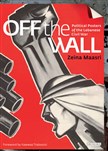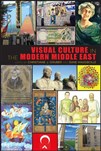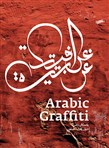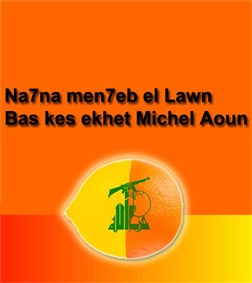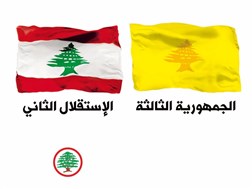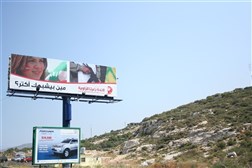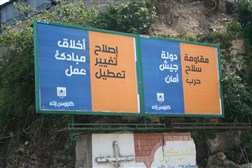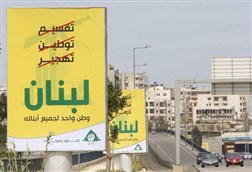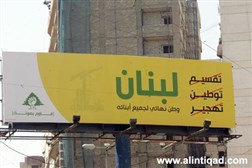Following four years of political rivalry between the March 14th and March 8th coalitions, parliamentary elections in 2009 again highlighted the acute division in political discourses between the two factions. According to the new electoral law that was passed following the Doha agreement in May 2008, discursive competition emerged mainly between the Christian factions within those coalitions. Political analysts suggested that the parliamentary majority would be decided through the Christian vote. The divisions among the Christian factions involved in these two political discourses were clearly projected through their electoral campaigns. Christian factions supporting the March 14th coalition were represented mainly by Kataeb, Lebanese Forces, and other parties, who bluntly focused their campaigns against the potential of a hegemonic state of Hizbullah and its allies, and warned of the consequences on the political system if the March 14th coalition was defeated. Their essential aim was to highlight Hizbullah as a faction that defies the Lebanese political system and intends to implement a republic of its own. Moreover, the campaigns of March 14th suggest that Hizbullah is a threat to the collective and national Lebanese identity.
In this essay, we first identify the claims of March 14th against Hizbullah by decoding their electoral posters in 2009. We then consider Hizbullah's alternative representation of the party (and their inclusion in the March 8th coalition) by decoding Hizbullah's electoral posters.
March 8 as "they"
Since the formation of the March 8th and 14th coalitions in 2005, the dichotomy of "us versus them" has been heavily emphasized. This division was particularly obvious in the 2009 electoral campaigns. The claims March 14th directed towards March 8th in these posters highlighted them as "other", and emphasized the alliance between Hizbullah and the FPM (Free Patriotic Movement).
This perception of the coalition in terms of their political orientation and ideology is highlighted through graphic artefacts that emerged throughout the electoral campaigns. Figure 1 is one of the unofficial visuals that accompanied the campaigns. Issued by a March 14th supporter, it spread quickly and with ease through online blogs and chain mails, emphasizing the notion of the "us versus them" antagonistic relationship.
The background is created out of a combination of orange and yellow, the official colors of Michel Aoun's FPM and Hizbullah, respectively. Half a lemon and half an orange are fused together, with Hizbullah's logo imprinted on it. The text used is in colloquial Arabic language, typed using a Latin typeface. The translation would be "we love the colour, but (to hell with) Michel Aoun". Due to the FPM's "orange" campaign, the fruit was included in the lexicon of the symbols used to represent the FPM (the tick, the omega sign, the orange colour, etc.) This analogue was extended to represent Hizbullah with a lemon. We're faced with a symbolic representation of both parties. The use of two fruits fused together suggests an abnormal combination that cannot be conceived naturally. The imposition of Hizbullah's logo on top of this fruit labels the coalition as followers of Hizbullah, as the FPM logo is not present on an equal plane. As for the text, this mode of writing Arabic using Latin characters and numbers has been used through the past few years amongst youth, especially when Internet and chatting became a frequent method of communication.
Although this visual was not printed and posted in the streets, it reflects March 114th's perception of this coalition, which is a combination of two historically opposed ideologies for similar purposes. The vilification aspect in this visual is present in the assemblage of two different fruits that create an unnatural being, and also in the common swear word (kes ekhet) used amongst Lebanese youth. This visually reinforces the definition of the March 8th coalition as a "they" and lays the foundation for understanding this demarcation in many of the March 14th posters printed during the 2009 campaigns.
Figure 2 was issued by the Lebanese Forces (LF), a member of the March 14th coalition. It is composed of the Lebanese flag and another flag of the same size, whose background is yellow with the silhouette of a cedar tree imprinted in orange in the center. The text under the yellow flag says "The Third Republic" and the text underneath the Lebanese flag says "The Second Independence". The logo of the LF is placed underneath the Lebanese flag and the text. The yellow flag on the right, when placed next to the Lebanese flag, suggests a change in the colors of the Lebanese flag in order to represent "The Third Republic". The text underneath anchors the idea that this third republic would change the country's symbol into a yellow and orange visual. Considering the context of the "Third Republic" in the Lebanese elections of 2009, the yellow and orange represent the adversary of the March 14th coalition, March 8th, whose main components are the FPM and Hizbullah. The orange color, used so prominently during 2009's campaign in Michel Aoun's (FPM) campaign, and the yellow, which is the background of Hizbullah's logo, suggest a change imposed on the Lebanese national identity.
If we're to consider the political discourse this campaign is produced through, the representation of the flag may contain another layer of connotations. Given that Hizbullah's affiliation with Iran is due to the party's belief in the Islamic state as the only real state, the yellow background, replacing the white and red background, could also mean the establishment of a new regime, Hizbullah's regime, which, the campaign suggests, is not Lebanese. As for the orange cedar, it complements the new established regime. Left with only two colors, this flag would represent the state of the political regime if March 8th comes to power, which would mean the annihilation of the national Lebanese identity and its current political regime, as well as the establishment of Hizbullah's hegemonic regime.
Figure 3, issued and printed by candidates of "Zgharta Al Zawiya", another member of the March 14th coalition, was posted on large billboards across Lebanon as part of the coalition's official campaign. Two photographs are posted in equal size, one of which depicts a close up of a young girl's face with the Lebanese flag drawn on her cheek, and a hint of the Lebanese flag behind her. The picture to the right depicts a crop of a male body holding a weapon; behind him the blurred yet still discernible yellow flag of Hizbullah with the green Kalashnikov. The text: "who resembles you more?" is a question that faces the audience, the Lebanese voters.
The close-up of the girl's face is very straightforward, allowing the viewer to easily identify with the visual scene. The smile suggests her happiness, and the Lebanese flag painted on her face along with the larger flag behind her, suggests a scene of peaceful demonstration. It makes reference to the well-known yearly parades of March 14 supporters to commemorate the death of the late PM, Rafik Hariri. A young, happy girl, demonstrating in favor of March 14th, portrays the coalition as the right choice.
The cropped torso in the photograph on the right-hand side of the billboard already dehumanizes the scene. The person depicted is holding a heavy weapon, a war tool. The fact that this person is faceless makes them menacing and dangerous. The background referring to Hizbullah implies that this faceless, dangerous person is a member of Hizbullah.
Through the photographic medium, the most direct mode of representation, the viewer is forced to compare the two shots. They are faced with the urgency of making a choice, especially with the text that anchors this comparison and directs it as a question that needs an answer. This depiction of March 8th represented by Hizbullah, is countered with the use of the Lebanese flag in the alternative image, the symbol of the nation state. Every Lebanese citizen is entitled to refer to his or her nationality using this flag. Using it as a marker of difference between the March 14th and 8th coalitions implies that the March 8th coalition isn't Lebanese in its nature, and the right choice any Lebanese citizen would make is to vote for the March 14th coalition.
The Carlos Edde campaign in figure 4 revolves around countering keywords used by and attributed to the March 8th coalition with alternative terms that qualify Edde's political discourse. The billboard on the right is our focus. Its background sets the tone of the dichotomy, with the right half in orange (March 8th) and the left half in blue (March 14th). This setting guides the viewer's eye to read each word in orange and its counterpart in blue, since the Arabic reading progresses from right to left. "Resistance" versus "government", "weapon" versus "army", "war" versus "security". The name of the March 14th coalition candidate, Carlos Edde, placed in the bottom left corner of the poster, further anchors the confrontation between the two political coalitions. The orange color-coding stands primarily for FPM; however, the first word, "mouqawama/resistance", is also a term used in Hizbullah's discourse. The use of this specific term implies Hizbullah in the confrontation suggested by this poster. "Weapon" is thus understood to be the weapon of Hizbullah, and this term's counterpart is "army" (referring to the Lebanese army). "War" is countered with "security", implying that if March 8th were to come into power, it would entail war, while March 14th would assure security.
The central aspect of this billboard is the prominent use of vilification, antagonistic to national security and stability, rendering March 8th as a threat. The we/they relationship in this poster is clearly antagonistic, where March 8th as a "they" is rendered as a menacing enemy. The demarcation of the "they" is established using the first word, "resistance". According to this poster, resistance is the opposite of government, and this marginalizes March 8th from the concept of the government, thus attempting to remove them from the Lebanese political discourse and render them as outsiders. The "Weapon"/"Army" dichotomy further reinforces the March 8th coalition as antagonistic and aggressive. The use of "weapon" in this sense symbolizes it as a factor exterior to the Lebanese Army, hence threatening the nation's national security. "War" versus "security" comes into play to finalize the desired conclusion that this poster implies. The March 8th coalition, specifically Hizbullah, is represented as an outsider militia that illegitimately harbors weapons, and causes war. In contrast, the March 14th coalition is presented as the right choice for a secure Lebanon.
March 8 as "we"
Throughout the electoral campaigns (figs. 5 and 6), Hizbullah remained consistent in its use of the word "Lebanon", the centerpiece of the series of posters that composed the campaign. The composition of the posters consisted of a yellow background with a white strip, and the negation of three terms: "taqseem, tawteen, tahjeer" ("your Lebanon, our Lebanon, their Lebanon"). The term "Lubnan" ("Lebanon") in a large, bold green typeface, is flanked by the slogan: "one country for all its citizens". The white strip contains a green logo with a fist superimposed on the green silhouette of a cedar, along with the slogan "resist with your vote". The most remarkable aspect in these series of posters is Hizbullah's semi-transparent logo blended with the yellow background, which lacks its usual accompanying slogan: "the Islamic resistance in Lebanon".
The posters carry elements that are specific to Hizbullah's logo, such as the color scheme (green and yellow) and the concept of resistance, embodied in the slogan: "resist with your voice", placed underneath the cedar and fist. Throughout these posters, Hizbullah projects its conception of Lebanon by negating certain terms that it believes unsettle the country: (taqseem, tawteen, tahjeer, hirman, etc.). Eventually, the final idea Hizbullah presents with this poster is that Lebanon is one country to all of its citizens.
The reference to "Islamic resistance" is removed from the logo. However, the aspect of resistance is still present as a call to action in textual form ("resist"), and is also reflected in the use of a fist, which is a "symbol of resistance and unity".[1] Furthermore, this fist is superimposed on top of a cedar tree, which is a national symbol of Lebanese identity as it is depicted in the Lebanese flag. The resistance is removed from its "Islamic context" and replaced under the context of Lebanese political discourse. Since resistance is made against a "they", the poster presents the negation of the concepts "division, inequality, etc.", which suggests that the resistance shall be exercised against such threats to Lebanon as a country.
Considering the use of resistance in the Lebanese political discourse as expressed in this poster, we notice that Hizbullah seeks to represent Lebanon as a united whole, as a country for all of its citizens. The resistance would be towards exterior threats to Lebanon as represented by the interference of foreign powers in the nation's affairs. The "we" would be Lebanon as a whole, represented under Hizbullah; the "they" would be external agents/influences that are perceived as dividing national unity.
Another visual aspect that connotes Hizbullah's integration in the Lebanese political discourse is its logo, which is the only form depicted as semi-transparent. The "Islamic resistance in Lebanon" is absent, which signifies a major shift in the political discourse of this resistance. Removed from its "Islamic" context, Hizbullah seeks to address a wider Lebanese audience. This is mainly contingent upon the arguments the "other" coalition, March 14th, claims against Hizbullah as being an outsider to the Lebanese identity.
Notes
* This essay was originally written for the Signs of Conflict course at the American University of Beirut in the Spring semester of 2009.
[1] Lincoln Cushing, "A Brief History of the Clenched Fist Image", Docs Populi, January 25, 2006,
Bibliography
Chomsky, Noam. Media Control: The Spectacular Achievements of Propaganda. New York: Seven Stories Press, 2002.
El-Khazen, Farid. "Political Parties in Postwar Lebanon: Parties in Search of Partisans." Middle East Journal 58, no.4 (2003): 605-626.
Hall, Stuart (ed.). Representation: Cultural Representations and Signifying Practices. London: Sage Publications in association with Open University, 1997.
Harb, Mona, and Reinoud Leenders. "Know Thy Enemy: Hizbullah, 'Terrorism' and the Politics of Perception." Third World Quarterly 26, no.1 (2005): 173-197.
Heller, Steven. Iron Fists: Branding the 20th Century Totalitarian State. New York: Phaidon, 2008.
Maasri, Zeina. Off the Wall: Political Posters of the Lebanese Civil War. London: I.B Tauris, 2009.
Mouffe, Chantal. On the Political. London: Routledge, 2004.
Saad-Ghorayeb, Amal. Hizbu'llah: Politics and Religion. London: Pluto Press, 2002.
Qassem, Naim. Hizbullah: The Story from Within. London: Saqi, 2005.
